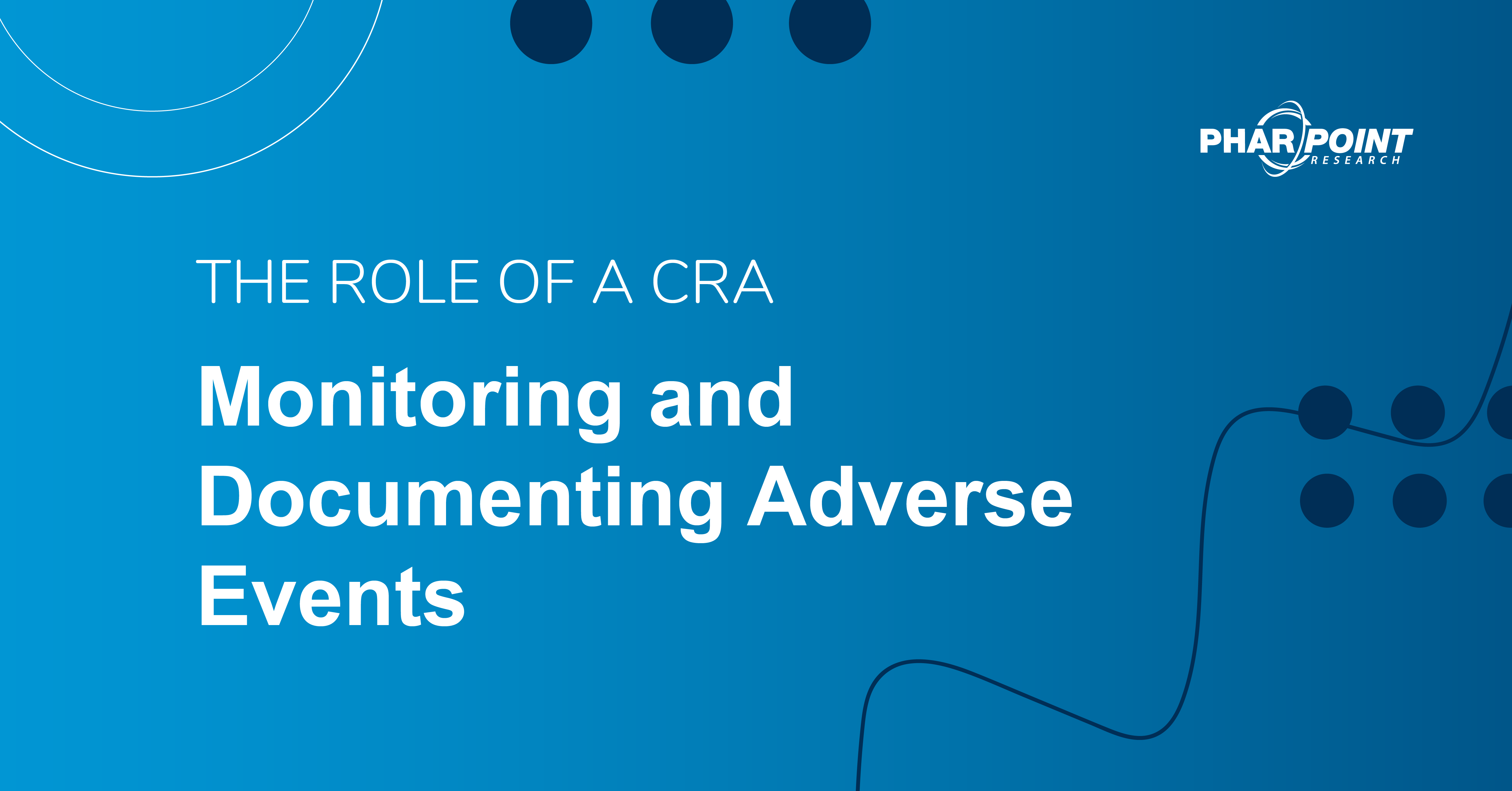The Role of a CRA: Monitoring & Documenting Adverse Events
Adverse event monitoring is critical in the role of a clinical research associate (CRA), aligning with the third principle of Good Clinical Practice: “The rights, safety, and well-being of the trial subjects are the most important considerations and should prevail over interests of science and society.”
In this article , we discuss how CRAs review adverse events, answering:
- What are adverse events (AEs) in clinical trials?
- What’s the role of a CRA in monitoring AEs?
- What kind of documentation is necessary surrounding AEs?
What are adverse events in clinical trials?
Per the FDA’s definition (21 CFR 312.32(a)), an adverse event is “any untoward medical occurrence associated with the use of a drug in humans, whether or not considered drug related.”
An adverse event may be any unfavorable and unintended sign, symptom, or disease.
In order to adequately review, assess, and monitor adverse events identified at a clinical trial site, events are classified by Severity, Expectedness, and Relatedness.
In a 2016 publication, researchers conducted a population-based analysis to estimate the incidence, diversity, and association of patterns of adverse events by age. The study looked at over 17,800 clinical trials with over 6.8 million participants.
The publication found that children 0-9 years old and adults aged 50-59 had the two highest incidence rates, with adults aged 20-29 showing the lowest incidence rate.
The report also found that clinical trials that recruited older patient populations showed significantly higher levels of adverse event diversity.
What is the role of a CRA in monitoring AEs?
The study protocol and Clinical Monitoring Plan should outline information on AE review and reporting timelines, setting clear expectations for both site staff and CRAs.
At monitoring visits during subject source review, CRAs should examine each subject study visit since the last monitoring visit for any events that may have occurred. This may include:
- New illnesses
- Exacerbated existing illnesses
- Abnormal lab values of clinical significance
- New ailments or pains, etc.
CRAs should discuss these events with the Principal Investigator (PI) and other applicable staff.
What kind of documentation is necessary for adverse event details?
During their review, CRAs must ensure adverse event details are fully documented and available in the subject source. This should include documentation of investigator review in a timely manner.
Adequate documentation of an AE may include:
- Start and stop date and time (if applicable) of event
- Event term and event description
- Causality to Investigational Product (IP)
- Severity, CTCAE grading, and determination if AE is a Serious Adverse Event
- Action Taken, for example:
- IP changes
- Event mitigation steps
- Medications given
- Ongoing updates, as necessary, including Outcome
The study’s electronic data capture (EDC) should reflect the adverse event and all applicable details. EDC data entry should be performed as soon as possible, but at least within the timelines determined prior to study activities. Additionally, CRAs must review adverse event details for any concomitant medication administered as a result of the adverse event. All con meds must be listed in both subject source and in the applicable EDC Case Report Form (CRF) page.
Need clinical monitoring support for an upcoming clinical trial? Contact the PharPoint team to learn more about how our team can support your trial.




